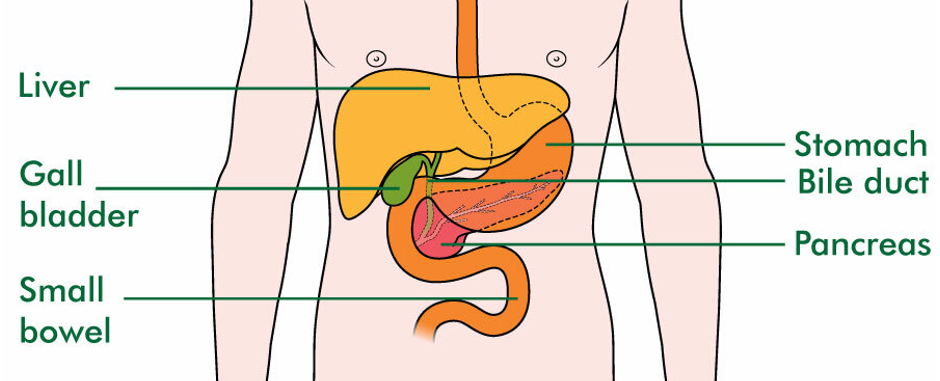Bile duct cancer (cholangiocarcinoma) is rare, with around 1,000 new cases every year in the UK.
It is almost always a type of cancer called adenocarcinoma, which starts in the lining of the bile duct.
Meet the Gastrointestinal (GI) team.
What is the bile duct?
The bile ducts are part of the digestive system. They are the tubes that connect the liver and gallbladder to the small bowel. Bile ducts carry bile.
Bile breaks down fats in food to help us digest them. It is made by the liver and stored in the gallbladder. The bile ducts and gallbladder together are known as the biliary system (sometimes called the biliary tree).
Am I at risk?
Bile duct cancer is rare. It is not usually clear what has caused bile duct cancer, but there are certain things that can increase the risk of developing it. Risk factors of bile duct cancer include:
- Age- bile duct cancer is more common in people over the age of 65
- Long-term inflammation or irritation of the bile ducts
- Certain inherited conditions
For more information on the risks of bile duct cancer, please follow this link.
Symptoms of bile duct cancer
Cancer in the bile ducts can block the flow of bile between the liver and the bowel. This causes bile to flow back into the blood and body tissues. This can cause jaundice. Symptoms of this include:
- yellowing of the skin and whites of the eyes
- your pee (urine) to become a dark yellow colour
- pale, loose poo (stools) that is difficult to flush
- itchy skin
Other symptoms of bile duct cancer include:
- discomfort in the tummy area (abdomen)
- loss of appetite
- tiredness
- feeling generally unwell
- high temperatures (fevers)
- weight loss
For more information on the symptoms of bile duct cancer, please follow this link.
Patient information
For more information from Macmillan regarding bile duct cancer, please follow this link.
For information from Cancer Research UK regarding bile duct cancer, please follow this link.
